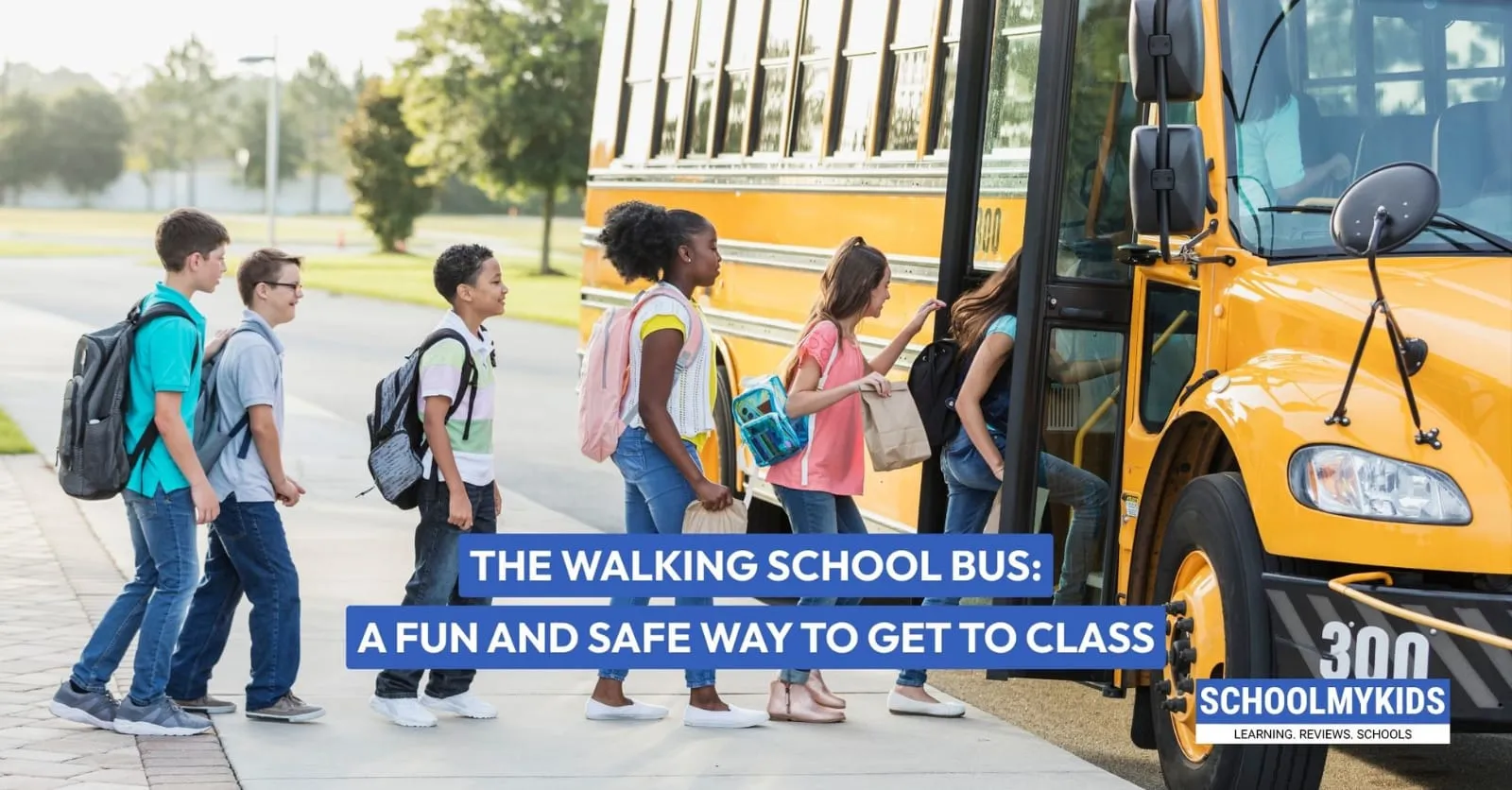Many parents find it challenging to get their children safely to school every morning. Traffic, busy roads, and concerns about stranger danger add to the stress. That’s where the walking school bus comes in. It is a simple, community-driven solution that combines safety, exercise, and social time for kids.
What Exactly Is a Walking School Bus?
Think of it as a regular school bus, but with feet instead of wheels! A walking school bus is an organized group of students who walk to and from school together under adult supervision. Just like a traditional bus, it follows a set route with designated "stops" where children can join the group. Parents or other trusted adults volunteer as "drivers," ensuring everyone gets to school safely.
Why Your Child Should Hop On
Walking school buses offer tremendous benefits:
- Safety in Numbers: Walking in a group makes children more visible to drivers and less vulnerable to strangers.
- Physical activity: Kids get energizing exercise before and after school, helping them stay focused in class.
- Environmental impact: Fewer car trips mean less pollution and traffic congestion.
- Community building: Children make friends across grade levels while parents connect with neighbors.
- Independence: Kids develop confidence, street smarts, and responsibility.
- Punctuality: With a set schedule, tardiness often decreases.
- Joy: There's something special about walking and talking with friends that makes the journey fun!
How to Start and Maintain a Walking School Bus
1. Talk to Your School and Neighbors
Check if there’s already a walking school bus program or if other families are interested. Your school’s parent-teacher association is a great place to start the conversation.
2. Plan a Safe Route
Walk the route yourself first to identify safe sidewalks, crosswalks, and any hazards like “sneaky driveways” where cars might back out without seeing pedestrians. Choose well-lit, low-traffic streets and avoid shortcuts through isolated areas.
3. Set a Schedule and Meeting Points
Decide how often the walking school bus will run: daily, weekly, or just on certain days. Pick convenient, consistent meeting spots and times so everyone knows where to gather.
4. Recruit and Train Volunteers
Adults leading the group need to understand safety rules and their responsibilities. The CDC recommends a ratio of one adult per six children, but younger kids may need more supervision. Volunteers should be familiar with pedestrian safety and emergency procedures.
5. Communicate Clearly
Create a phone tree or group chat to keep everyone informed about schedules, weather changes, or any issues. Share maps of the route and safety guidelines with families.
Essential Safety Lessons to Teach Your Children
Before your child joins a walking school bus, make sure they understand these crucial safety rules:
Pedestrian Safety Basics
Teach your children to:
- Look left, right, and left again before crossing any street
- Use crosswalks whenever available and wait for crossing signals
- Make eye contact with drivers before crossing in front of vehicles
- Walk, don't run, when crossing streets
- Stay on sidewalks whenever possible (if no sidewalk exists, walk facing traffic)
- Avoid distractions like phones or headphones while walking
- Be especially careful around driveways and parking lot entrances
Walking School Bus Etiquette
Your child should understand:
- Stay with the group at all times
- Listen to and follow adult instructions immediately
- Walk, don't run, to avoid falls and keep the group together
- Be respectful of other walkers and neighborhood property
- Report any concerns or problems to the adult leaders
- Use inside voices so adult leaders can communicate with everyone
Parent Responsibilities: Making It Work
As a parent, whether you're volunteering or just sending your child, here's what you need to know:
For All Parents
- Weather preparedness: Ensure your child has suitable clothing for that day's forecast—rain gear, warm layers, sun protection, etc.
- Punctuality: Have your child ready at the designated stop on time
- Communication: Notify the route coordinator if your child will be absent
- Reinforcement: Regularly review safety rules with your child
- Visibility: Consider bright clothing or reflective items during darker months
For Volunteer "Drivers"
If you're volunteering as an adult supervisor:
- Be vigilant: Constantly scan for potential hazards and keep count of children
- Know the route: Familiarize yourself with crossings, traffic patterns, and potential danger spots
- Carry essentials: Bring a first aid kit, phone, emergency contact list, and reflective vest
- Set expectations: Clearly communicate behavior rules to all children
- Stay connected: Exchange contact information with other volunteers and parents
Possible Issues and How to Handle Them
- Late Arrivals or No-Shows: Have a clear policy for what to do if a child misses the bus or arrives late, perhaps a phone call or a backup plan.
- Behavioral Challenges: Set clear expectations for behavior and consequences. If a child repeatedly breaks rules, discuss with parents and consider if the walking bus is the right fit.
- Traffic or Construction Changes: Regularly review the route for new hazards and adjust as needed.
- Stranger Danger: Reinforce the family password system and teach kids to shout and run if approached by a stranger.
Conclusion
The walking school bus is more than just a way to get to school; it’s a community effort that promotes safety, health, and friendship. With thoughtful planning, clear communication, and good habits, parents can create a fun and secure journey for their kids every morning. So why not start a walking school bus in your neighborhood? It’s a step toward safer streets and happier kids.









Be the first one to comment on this story.